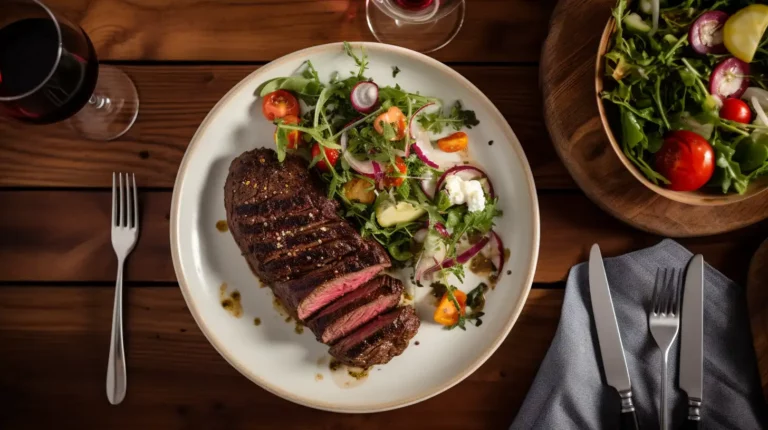Is dairy bad for you? Depends on who you talk to.
We live in a world overloaded with information. And the truth is, when it comes to health, it’s hard to know what is actually good for you anymore.
Maybe you grew up your whole life drinking milk, eating cereal, having grilled cheese sandwiches, and so on and so forth. It was something so normal that the possibility of dairy products being bad for you was just out of the question.
This is where WILDFIT® founder Eric Edmeades has something to say about how dairy impacts the human body. As a pioneer in the field of evolutionary biology and nutritional anthropology, Eric is also the founder of the WILDFIT Quest at Mindvalley, a transformational program that leads you to food freedom.
Is dairy bad for you?
Simply put, yes, according to Eric. Everything society has taught you about dairy is that it’s imperative to health because you need calcium. But that simply isn’t true, and it’s not the best way to get your calcium intake in the first place.
Many times people don’t even realize how unhealthy they actually are. And that is because they get used to living with certain symptoms that just become the normality of their lives.
Take Eric, for example, who was struggling with cystic acne, throat infections, bone density, and digestive issues. He tried to tame the symptoms with countless visits to various doctors, but then, he decided to make some lifestyle changes.
Guess which? Cutting out dairy products. And the results of being dairy-free for 30 days amazed him, as his symptoms started to revert naturally.
My experiences with, and research into, dairy products inspired my curiosity about food, nutrition, and the development of the human diet.
— Eric Edmeades, trainer of Mindvalley’s WILDFIT Quest
What does science say about dairy?
People believe that it’s natural to consume dairy because our ancestors did so. However, studies show that the first trace of humans consuming milk dates back to only 6,000 years ago.
This might seem like a long time ago, but you need to consider the very slow pace of evolution and the many thousands of generations it takes for a species to change its dietary relationships. In other words, milk is a brand-new substance introduced into the human diet.
Why is milk bad for you?
Now that we have pointed out Eric’s view on the “Is milk good for you or is it not?” debate, we can move on to the why.
Dairy can cause calcium loss
What society has taught us about dairy has been proven wrong by several studies.
One study from the Cornell-China-Oxford Project on Nutrition, Health, and Environment discovered that “animal protein, including that from dairy products, may leach more calcium from the bones than is ingested.” This can happen because dairy products are very acidic for the body, and the way in which the human body neutralizes acidity is with calcium.
And where does it take the calcium from? Your bones.
Another thing to consider, says Eric, is where the highest consumption of dairy is found in the world. Statistics show that Scandinavian countries reported the highest number of people consuming dairy products. The interesting fact is that these countries are surprisingly (or not) also the places where the highest level of osteoporosis is found.
Fascinatingly enough, according to the same statistics, the lowest levels of osteoporosis were found in Asian countries, which also happen to be where people consume the least amount of milk. Is it a coincidence?
Most people are lactose intolerant
Eric believes there’s a link between dairy and inflammation, which can lead to many health issues. What he points out is that 65% of the world’s population is actually lactose intolerant.
This happens because after babies stop needing milk from their mothers, the body doesn’t produce lactase anymore (the digestive enzyme that breaks down lactose). And the fact that 35% of the population can digest milk easier is just a signal of the human body trying to adapt by continuing lactase production.
This isn’t a positive influence on your body; it’s just the system trying to defend itself. Your body’s histamine levels increase when you drink milk, and your digestive system lines itself with mucus to protect against acidity.
Evolution is a very slow process. All we’ve done in the last thousands of years is knock down only one of the body’s defense mechanisms for milk — producing lactase.
— Eric Edmeades, trainer of Mindvalley’s WILDFIT Quest
Dairy has been linked to cancer
A study from the University of Oxford suggests that “People who consumed dairy products regularly had significantly greater risks of developing liver and breast cancer. For each 50g/day intake, the risk increased by 12% and 17%, respectively.”
Animal milk isn’t made for human consumption
Each species developed the best milk to grow its babies. And that is why breastfeeding stops after an age when the infant has grown enough. But what happens when you continue to drink milk your whole life? Different health issues can occur, such as acne, digestive problems, and autoimmune diseases.
The milk mothers make changes week by week to match the developmental stage of the baby — that is how specific milk is; not just species-specific but rather developmentally specific.

Benefits of cutting out dairy products
Eric strongly recommends taking a “non-milk holiday.” Spending 30 days without consuming any milk products and you’ll clearly notice the benefits.
During this time, you might notice a visible improvement in various health issues, including (but not limited to):
- Acne
- Digestive issues
- Eczema
- Asthma
- Sinusitis
- Rashes
Some immunity-boosting foods to incorporate into your diet during this time (and not only) are:
- Root vegetables
- Dark leafy greens
- Seasonal fruits
- Raw honey
- Nuts
- Fatty fish
- Beef
If you’re up for a challenge, simply stop eating dairy products for one month and see how you feel. And, while there is no need to replace milk in your diet, there are some alternative options, including coconut, hemp, and almond milk.
Your health is the first wealth
Taking care of your health is the foundation of a happy and prosperous life. And sometimes, this might mean confronting your beliefs regarding what is truly healthy for you and what is not.
You might feel a little confused when changing habits that you knew were “right” since you were a kid. But if you need some guidance along the way, Mindvalley can come in handy. You can unlock the FREE WILDFIT Masterclass and learn more about Eric’s approach to a healthy lifestyle after years of research.
And the best part of all is that you don’t have to do it alone. You can be part of a community that wants to get happy and healthy just as much as you do.
Ready for food freedom? Welcome in.









